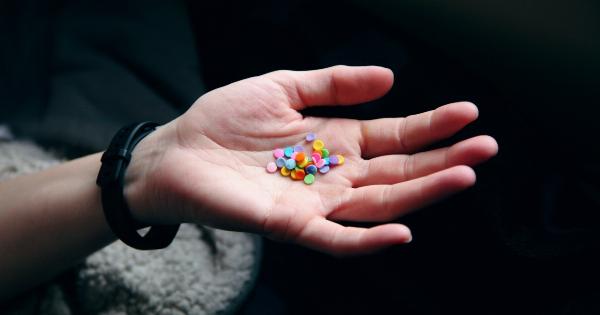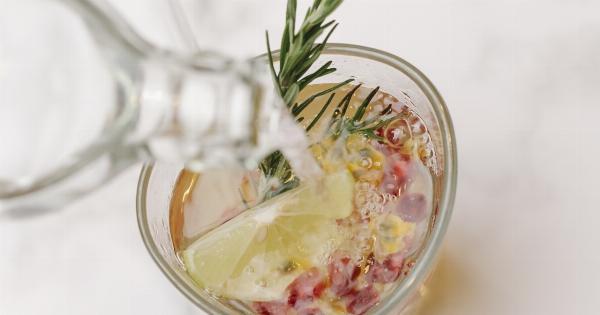Rose water has been used for centuries as a natural beauty remedy due to its numerous skincare benefits. It is known to hydrate, soothe, and rejuvenate the skin, making it a valuable addition to your skincare routine.
While there are many commercially available rose waters in the market, creating your own at home ensures a pure and potent product that is free from artificial additives. In this article, we will guide you on how to create the perfect rose water for your skin.
Why Rose Water?
Rose water is primarily derived from the petals of roses through a steam distillation process. It is rich in antioxidants, vitamins, and minerals that nourish and protect the skin.
Rose water is known for its calming and balancing properties, making it suitable for all skin types, including sensitive and acne-prone skin. It helps maintain the skin’s pH balance, reduces inflammation, and provides a refreshing and radiant glow.
Additionally, rose water can also be used as a natural toner, makeup setting spray, and to enhance the effectiveness of other skincare products.
Choosing the Right Roses
The first step in creating the perfect rose water is to choose the right type of roses. It is important to use organic or pesticide-free roses to ensure that the final product is free from harmful chemicals.
Roses that are highly scented and have vibrant petals are ideal for making rose water. While there are various types of roses available, Damask rose (Rosa damascena) and Rosa centifolia are popular choices due to their intense fragrance and therapeutic properties.
Preparing the Rose Petals
Once you have selected the roses, follow these steps to prepare the rose petals for the rose water:.
- Gently rinse the rose petals under cool water to remove any dirt or debris. Avoid using hot water as it can strip away the natural oils.
- Pat dry the rose petals using a clean towel or paper towel. It is important to ensure that they are completely dry to prevent the growth of mold or bacteria.
- Remove the green base of the petals as it can add bitterness to the rose water.
Methods for Creating Rose Water
There are two common methods for creating rose water at home: the simmering method and the steam distillation method.
The Simmering Method
The simmering method is the most straightforward and commonly used method for creating rose water. Follow these steps:.
- Place the prepared rose petals in a large stainless steel pot.
- Add enough distilled or filtered water to cover the rose petals.
- Cover the pot with a lid and simmer the mixture on low heat for about 20-30 minutes.
- Allow the mixture to cool completely and strain the liquid into a sterilized glass bottle.
- Store the rose water in the refrigerator for longevity.
The Steam Distillation Method
The steam distillation method is slightly more complex but yields a more concentrated and potent rose water. Follow these steps:.
- Fill a large pot with distilled or filtered water and place a heat-resistant bowl in the center of the pot.
- Place the rose petals around the bowl, ensuring that they do not touch the water.
- Place the pot lid upside down and fill it with ice or cold water.
- Bring the water to a simmer and cover the pot.
- As the water simmers, the steam will rise, condense on the lid, and drip into the bowl with the rose petals.
- After approximately 30-40 minutes, turn off the heat and allow the rose water to cool.
- Strain the rose water into a sterilized glass bottle and store it in the refrigerator.
Storage and Shelf Life
Proper storage is crucial to maintain the effectiveness and shelf life of your homemade rose water. Here are some tips:.
- Store the rose water in a sterilized glass bottle with a tight-fitting lid to prevent contamination.
- Keep the bottle in a cool and dark place, away from direct sunlight.
- Refrigerate the rose water to extend its shelf life, especially if you live in a warm climate.
- Use a clean cotton ball or a spray bottle to apply the rose water to your face and skin.
Using Rose Water in Skincare
Now that you have the perfect rose water, here are some ways to incorporate it into your skincare routine:.
- Toner: Apply rose water on a cotton pad and gently swipe it across your face after cleansing to tone and hydrate the skin.
- Face Mist: Pour rose water into a spray bottle and spritz it on your face throughout the day to refresh and revitalize your skin.
- Makeup Setting Spray: Spray a fine mist of rose water over your makeup to set it in place and achieve a dewy finish.
- Face Mask Ingredient: Mix rose water with other natural ingredients like honey, yogurt, or clay to create a homemade face mask for glowing and nourished skin.
Conclusion
Creating your own rose water is a simple and rewarding process that allows you to harness the amazing benefits of roses for your skin.
Whether you choose the simmering method or the steam distillation method, the result is a pure and natural rose water that can elevate your skincare routine. With regular use, rose water can help hydrate, soothe, and rejuvenate your skin, giving you a healthy and radiant complexion.
























